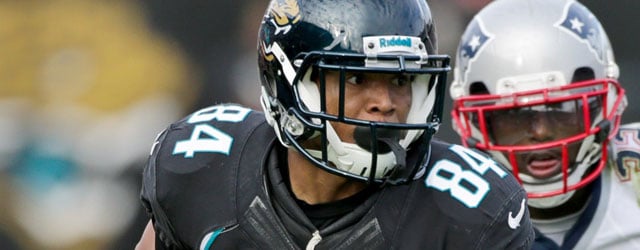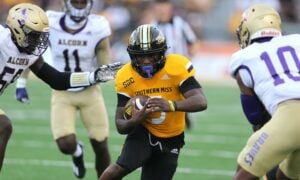Objective Roster Evaluations

One of the hardest things for any dynasty owner to do is take a long look at their own roster(s) and have an objective approach when evaluating their own teams. However, it’s also one of the most important qualities a dynasty owner can possess. In this article, I’m going to focus on how to properly evaluate your team(s) and when to stay content knowing you’re going to be an unstoppable rebel force within 2-3 years.
First things first – it’s ok if you’ve evaluated your team(s) without rose colored glasses on and determined you’re not a contender. As a matter of fact, the sooner you realize you’re not a contender, the sooner you can start making sure you will be in 2-3 years. There are always 4-6 teams that are not going to make the playoffs. It’s not the end of the world if you’re one of them for a year or two.
One of the most important things a non-contender can do is identify the players on their roster who are expendable due to the fact that by the time your team is relevant, these older players are almost done. So, if you own players like Andre Johnson, Roddy White, Maurice Jones-Drew, Arian Foster and Steven Jackson, the chances of them playing at a high level (or even in the league at all) by the time your team is a contender, is highly unlikely.
The way I see it, you have two choices.
You can either trade those players now to a team you think is trying to buy a championship this year. Or, you can wait until the season starts and target teams that are either at or below .500 that consider themselves a contender. Either way you look at it, the players I mentioned above only have a year or two left of significant fantasy value. At the same time, they still command a pretty penny on the open trade market. You’d be surprised what a struggling team is willing to give up in order to make a push for the playoffs. It’s almost like fishing with dynamite sometimes.
When trading aging vets to contending teams, there are only two things you should be looking for in return – premium rookie draft picks and players you believe have tremendous upside, yet are still relatively unproven. You have to take calculated risks on talented players whose situations are likely to clear up within a certain timeframe. Players such as Rueben Randle, Michael Floyd, Cecil Shorts, Ben Tate and Bernard Pierce are a few of my personal favorite targets.
You have to have enough foresight to know Blaine Gabbert and Chad Henne are not going to be the signal callers in Jacksonville in the near future. Even with two awful quarterbacks chucking him the rock, Shorts still finished the 2012 season as the WR24 – that makes him a low end WR2 with a ton of upside. However, because his quarterback situation is so terrible, he’s being drafted as a fringe WR4 in startup drafts. Or that Ray Rice isn’t getting any younger and Pierce looked more than capable of filling in for him admirably if and when his time comes. Situation is temporary, but talent always endures.
The second part of evaluating your roster consists of identifying what players you currently roster who are going to be impact players in 2-3 years. Once you’ve done that, patience is of the utmost importance. Not every rookie comes in and produces fantasy worthy statistics in their first or even second year.
Take C.J. Spiller for example. In 2010, dynasty owners spent a top three rookie pick on him, but how many had the patience to let him develop on the back end of their rosters into the stud he is now? You should’ve known he wasn’t going to immediately be handed the reigns. When Buffalo drafted him they already had Marshawn Lynch and Fred Jackson on their roster. Conventional wisdom should tell you it was going to take a year or two before Spiller got his shot. He should’ve been drafted with that in mind. Otherwise, it’s a classic case of a need for instant gratification.
The third part is going to sound unconventional to some, but let me explain.
Most dynasty owners evaluate their entire roster and judge whether or not it will be competitive in a three year window. That’s the norm and I’m not an advocate of it at all. I do think three year windows are important, but on a player-by-player basis. If you own Trent Richardson, A.J. Green, Jimmy Graham and Andrew Luck, are you really going to tell me that team only has a three year window in which to be competitive? Those players (barring health) have 5-8 year windows and in Luck’s case a lot more, so I sure hope not.
I also use three year windows to identify when player values are about to drop significantly. Matt Forte is a prime example of this. He’s going to be 30 in a three year window and could be out of the league in two years. You just never know. I can’t believe how many brilliant fantasy football minds are predicting running backs to be productive into their late 20’s, early 30’s. Don’t get caught up in that trap. Running backs that achieve this feat are anomalies, not the norm.
If it’s been a while since you’ve done an all out roster evaluation, now is the time. The season is rapidly approaching us and I’d hate for you to go into this season with unrealistic expectations. Just take a long, honest look in the mirror and for once, make sure you’re looking objectively. If you do and at the same time remember dynasty league are marathons and not all out sprints, you’ll be holding trophies before you know it. In the long run that’s what this game is all about.
Follow me on Twitter @harahduh2
- Dynasty Sleeper: Brice Butler - August 22, 2013
- Taking off the Cuffs - August 19, 2013
- Objective Roster Evaluations - June 29, 2013

































































